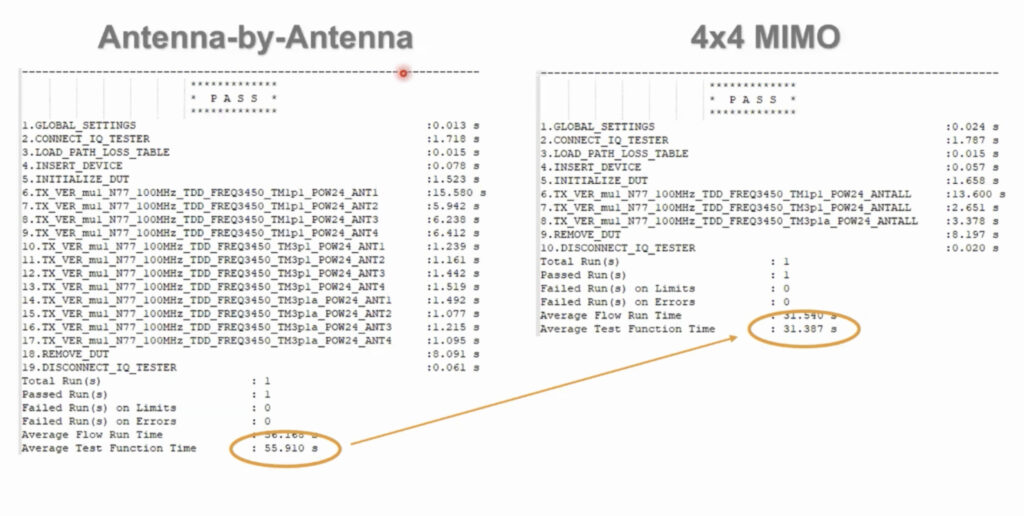Revolutionizing Radio Unit Testing: LitePoint’s Role in the Era of Open RAN
By Middle Wen
July 23, 2024
As part of the RCR Wireless News Test & Measurement Forum, LitePoint’s Middle Wen shared some Open RAN test challenges and strategies in the session: From Lab to Live; trends in network testing evolution.
In the rapidly evolving world of telecoms, Open RAN (O-RAN) is poised to transform the mobile landscape. O-RAN disaggregates traditional proprietary radio access networks (RANs), enabling operators to mix and match components from different vendors. This shift promises to accelerate 5G deployment, reduce operational costs, simplify maintenance and foster innovation within the RAN ecosystem.
However, achieving these benefits hinges on robust and comprehensive radio unit (RU) testing, which plays a crucial role in the performance and reliability of O-RAN systems.
Understanding O-RAN
O-RAN aims to standardize and open up the traditionally closed and proprietary RAN architecture. By allowing operators to use equipment from multiple vendors, O-RAN enhances flexibility and drives down costs. According to the Dell’Oro Group, O-RAN is expected to account for 20% to 30% of worldwide RAN revenues by 2028, up from 7% to 10% in 2024.
Recent major contracts and collaborations highlight O-RAN’s progress and the challenges in achieving a fully open, multi-vendor system. For example, AT&T’s five-year, $40 billion contract with Ericsson aims to manage 70% of its wireless traffic through O-RAN by 2026, while Verizon has deployed over 130,000 O-RAN-capable radios, mostly from Samsung. Despite the push for O-RAN, traditional RAN vendors like Ericsson, Nokia, and Samsung continue to play significant roles, raising questions about the true openness of single-vendor O-RAN systems.
However, given that one of O-RAN’s main challenges is system integration, single-vendor O-RAN may be an ideal transitional step. Here, the main vendor acts as the system integrator, coordinating with other vendors to ensure seamless integration. This can mitigate deployment risk as the industry works toward a multi-vendor, open ecosystem that prevents vendor lock-in and enables diverse suppliers.
The Importance of Radio Unit Testing
In the O-RAN ecosystem, the RU is an important component responsible for transmitting and receiving radio signals. Efficient and accurate RU testing is essential to ensure the radio meets the performance and interoperability requirements of O-RAN standards. Traditional testing setups are often complex, expensive and difficult to manage, requiring multiple testing devices and extensive manual configuration.
LitePoint addresses these challenges with the IQFR1-RU solution – a fully integrated, single-box tester specifically designed for RF parametric and fronthaul conformance testing. The solution integrates multiple Vector Signal Analyzers (VSAs) and Vector Signal Generators (VSGs) and eliminates dependency on external distributed unit (DU) emulators, simplifying the testing process and reducing costs.
Streamlining the Testing Process
- Downlink RF Testing: Downlink testing checks the RF parametric performance of the transmitter. The IQFR1-RU supports various 3GPP TS 38.141 test models, measuring parameters such as base station output power, frequency error, modulation quality and adjacent channel leakage ratio (ACLR).

- Uplink RF Characterization: Uplink testing tends to be more complex due to the need to simulate various interference scenarios. The IQFR1-RU can generate both wanted and interference signals, providing a comprehensive assessment of the RU’s receiver performance under real-world conditions. This is crucial for validating the RU’s sensitivity, dynamic range and in-band blocking performance.

- MIMO Testing for Reduced Cycle Time: MIMO testing is essential to ensure RUs can handle simultaneous transmission and reception of multiple data streams. LitePoint facilitates MIMO testing by integrating the necessary signal generation and analysis capabilities into a single unit; as many as four antennas can be tested simultaneously, significantly cutting testing time.

- MIMO Testing to Validate Performance: MIMO testing helps identify potential performance issues that might not be apparent in single-antenna testing. For instance, LitePoint’s testing has shown that while antenna-by-antenna measurements might indicate good performance, MIMO testing can reveal degradation in Error Vector Magnitude (EVM) under certain conditions, providing a more accurate assessment of real-world performance.
- Fronthaul Conformance Test: Fronthaul conformance test verifies that RUs within the O-RAN architecture comply with standards, ensuring proper network operation and seamless interoperability. The IQFR1-RU executes essential test cases for Management, Synchronization, Control and User planes through an intuitive GUI.
- Automation: Automation is a critical aspect of modern testing solutions, enabling faster and more consistent test execution. LitePoint’s IQfact5G automation test tool provides a user-friendly interface for setting up test parameters and running test sequences, reducing time to market and ensuring consistent test results across different phases of development and production.
Real-World Impact
The impact of effective testing extends beyond the lab. By simplifying the testing process and providing comprehensive, automated testing capabilities, operators and vendors can accelerate O-RAN deployment, to roll out high-speed, reliable 5G services.
Moreover, robust radio unit testing ensures that O-RAN systems can deliver on their promise of improved performance and interoperability. As the industry moves toward more open and flexible network architectures, the ability to thoroughly test and validate each component becomes increasingly important.
Automated Testing Drives O-RAN Evolution
Open RAN represents a significant shift in the telecoms industry, offering the potential for greater flexibility, cost savings and innovation. However, the success of O-RAN hinges on the ability to rigorously test and validate the performance of key components like RUs. LitePoint’s IQFR1-RU solution addresses this need with a fully integrated, automated testing platform that simplifies the testing process and ensures comprehensive coverage of critical performance parameters.
As the industry continues to evolve, comprehensive test solutions will play a pivotal role in enabling the widespread adoption of O-RAN, driving the next generation of mobile communication.
Hear more from Middle’s O-RAN testing presentation at the RCR Wireless News Test & Measurement Forum: https://www.testandmeasurementforum.com/home
Categories
Subscribe to the LitePoint Blog
Related Posts
3 for 3: How is O-RAN revolutionizing the wireless industry?
August 2, 2023
O-RAN: Challenges and Prospects on the Road to Maturity
December 8, 2023


